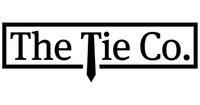White Tie Dress Code for Men: Mastery on Dress Code for Men
White tie dress code is the most formal and sophisticated attire a man can wear. Whether attending a royal gala, a state dinner, or an exclusive ball, understanding the essentials of this dress code is crucial. Unlike other formal styles, white tie has strict guidelines that leave little room for deviation.
Moreover, when mastering the white tie dress code, it is important to follow every detail precisely. The right fit, accessories, and styling make all the difference in presenting a polished look. Additionally, following this dress code for men ensures that you maintain the highest standard of elegance.
What is White Tie Dress Code?
White tie dress code represents the pinnacle of men’s formal fashion. Unlike black tie, which allows for some flexibility, white tie requires a set of specific clothing items that must be worn correctly. Traditionally, this dress code includes a black tailcoat, high-waisted trousers, a waistcoat, and a wing-collared shirt with a colorful bow tie.
Furthermore, the white tie dress code is often reserved for high-profile events. These occasions include royal banquets, opera galas, and prestigious award ceremonies. Adhering to the strict guidelines of this dress code for men ensures that you make a lasting impression at such events.
Essential Components of White Tie Dress Attire
1. The Tailcoat
White tie dress code requires a black tailcoat that is sharply cut and perfectly fitted. The coat must have long tails at the back and be worn unbuttoned to maintain the classic appearance. This is the foundation of white tie elegance.
Additionally, the dress code for men emphasizes a well-structured silhouette. The tailcoat should fit snugly across the shoulders and chest while allowing comfortable movement. Paying attention to these details ensures a refined and polished look.
2. High-Waisted Trousers
White tie dress code demands high-waisted black trousers with a satin stripe running down each leg. These trousers should fit well and sit perfectly above the waist to complement the waistcoat.
Moreover, the dress code for men insists on a precise fit. Baggy or ill-fitting trousers can ruin the elegance of white tie attire. Tailoring is essential to achieving a clean and structured look.
3. White Waistcoat
In addition, following the dress code for men means ensuring the waistcoat is always crisp and immaculately presented. A poorly fitted or wrinkled waistcoat can break the overall refinement of the outfit.
4. White Bow Tie Attire
A perfectly bow tied is a signature element of the white tie dress code. It should be made of high-quality cotton piqué and self-tied, rather than pre-tied, to reflect sophistication.
Similarly, the dress code for men insists on precise symmetry when tying the bow. A well-tied bow enhances the overall appearance and contributes to a distinguished presence.
5. Formal White Shirt
Likewise, the dress code for men recommends using shirt studs instead of regular buttons. These small details elevate the overall aesthetic and demonstrate impeccable style.
6. Black Patent Leather Shoes
White tie dress code demands black patent leather shoes, usually in the form of highly polished oxfords or opera pumps. These shoes must always be well-maintained and polished to perfection.
Additionally, the dress code for men suggests wearing thin black dress socks to maintain a sleek and uniform appearance. Attention to footwear detail is essential to completing the white tie ensemble.
7. Accessories
The final touch to the white tie dress code includes subtle yet essential accessories. White gloves, cufflinks, and a pocket square enhance the outfit’s elegance.
Furthermore, according to the dress code for men, accessories should always be understated and never overpower the classic white tie look. Simplicity and refinement are key.
When to Wear White Tie Attire?
Furthermore, the dress code for men applies to high-society events such as royal ceremonies, diplomatic receptions, and prestigious opera evenings. Ensuring that you are properly dressed for these occasions is crucial to making the right impression.
White Tie vs. Black Tie: What’s the Difference?
- White tie dress code is often confused with black tie. However, there are significant differences. While black tie allows for some flexibility, white tie is the ultimate in formal dressing.
- Moreover, the dress code for men in white tie requires specific elements, including a tailcoat and waistcoat, which are not present in black tie attire. Understanding these differences ensures you dress appropriately for any formal event.
Common Mistakes to Avoid
White tie dress code leaves no room for errors. Many men make mistakes when trying to master this formal style, which can ruin the overall look.
Additionally, the dress code for men warns against ill-fitting garments. A poorly tailored tailcoat or incorrect waistcoat length can disrupt the balance of the outfit. Investing in a properly tailored ensemble is crucial.
1. Wearing a Regular Tuxedo
Many assume that a tuxedo is suitable for a white tie event, but this is incorrect. A white tie dress code requires a tailcoat, not a tuxedo.
Similarly, the dress code for men specifies a white waistcoat, not a black one. Wearing the wrong attire can make you stand out for the wrong reasons.
2. Incorrect Accessories
Moreover, the dress code for men emphasizes using the right cufflinks, shirt studs, and white gloves for a complete and polished look.</span>
3. Untidy or Ill-Fitted Clothing
Furthermore, the dress code for men recommends steaming and pressing all garments before wearing them. Wrinkles and creases should never be visible.n>
Conclusions on White Tie Dress Code
Additionally, following the dress code for men ensures that you achieve a distinguished and elegant look. Whether attending a royal event, an exclusive gala, or an opera evening, wearing white tie correctly showcases impeccable style and sophistication.
By understanding every element, avoiding common mistakes, and paying attention to details, you can master the art of white tie dressing. Embrace the elegance, respect the tradition, and carry yourself with confidence in the most formal attire a man can wear.

